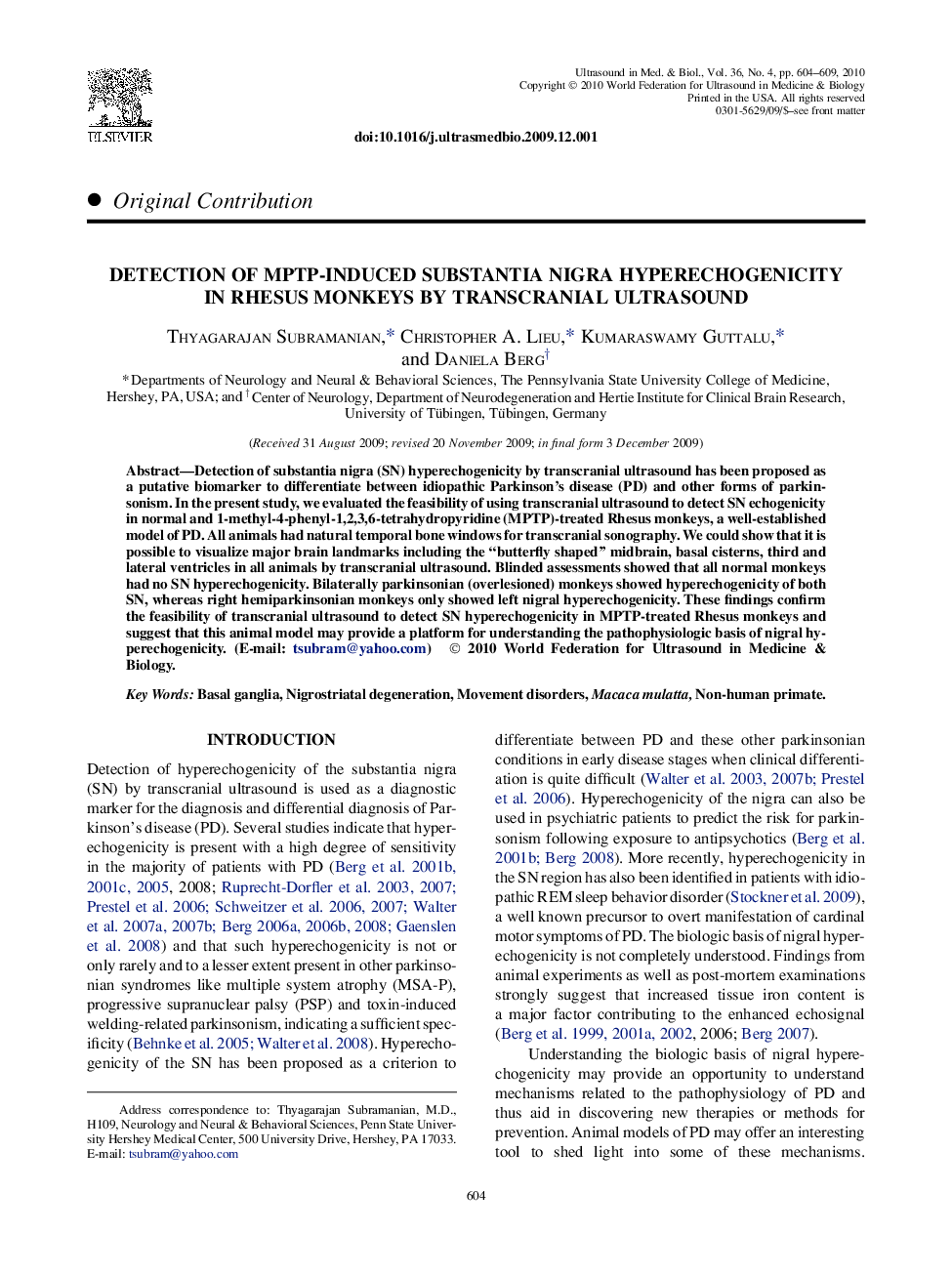| Article ID | Journal | Published Year | Pages | File Type |
|---|---|---|---|---|
| 1761872 | Ultrasound in Medicine & Biology | 2010 | 6 Pages |
Abstract
Detection of substantia nigra (SN) hyperechogenicity by transcranial ultrasound has been proposed as a putative biomarker to differentiate between idiopathic Parkinson's disease (PD) and other forms of parkinsonism. In the present study, we evaluated the feasibility of using transcranial ultrasound to detect SN echogenicity in normal and 1-methyl-4-phenyl-1,2,3,6-tetrahydropyridine (MPTP)-treated Rhesus monkeys, a well-established model of PD. All animals had natural temporal bone windows for transcranial sonography. We could show that it is possible to visualize major brain landmarks including the “butterfly shaped” midbrain, basal cisterns, third and lateral ventricles in all animals by transcranial ultrasound. Blinded assessments showed that all normal monkeys had no SN hyperechogenicity. Bilaterally parkinsonian (overlesioned) monkeys showed hyperechogenicity of both SN, whereas right hemiparkinsonian monkeys only showed left nigral hyperechogenicity. These findings confirm the feasibility of transcranial ultrasound to detect SN hyperechogenicity in MPTP-treated Rhesus monkeys and suggest that this animal model may provide a platform for understanding the pathophysiologic basis of nigral hyperechogenicity. (E-mail: tsubram@yahoo.com)
Related Topics
Physical Sciences and Engineering
Physics and Astronomy
Acoustics and Ultrasonics
Authors
Thyagarajan Subramanian, Christopher A. Lieu, Kumaraswamy Guttalu, Daniela Berg,
